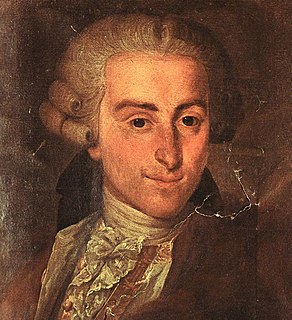Sammartini is a surname, and may refer to the brothers
- Giovanni Battista Sammartini, an Italian composer and oboist, younger brother of Giuseppe
- Giuseppe Sammartini, an Italian composer and oboist, older brother of Giovanni

Giovanni Battista Sammartini was an Italian composer, oboist, organist, choirmaster and teacher. He counted Gluck among his students, and was highly regarded by younger composers including Johann Christian Bach. It has also been noted that many stylizations in Joseph Haydn's compositions are similar to those of Sammartini, although Haydn denied any such influence. Sammartini is especially associated with the formation of the concert symphony through both the shift from a brief opera-overture style and the introduction of a new seriousness and use of thematic development that prefigure Haydn and Mozart. Some of his works are described as galant, a style associated with Enlightenment ideals, while "the prevailing impression left by Sammartini's work... [is that] he contributed greatly to the development of a Classical style that achieved its moment of greatest clarity precisely when his long, active life was approaching its end".
Giuseppe Francesco Gaspare Melchiorre Baldassare Sammartini was an Italian composer and oboist during the late Baroque and early Classical era. Although he was from Milan, most of his professional life was spent in London and with Frederick, the Prince of Wales.
| This page lists people with the surname Sammartini. If an internal link intending to refer to a specific person led you to this page, you may wish to change that link by adding the person's given name(s) to the link. |